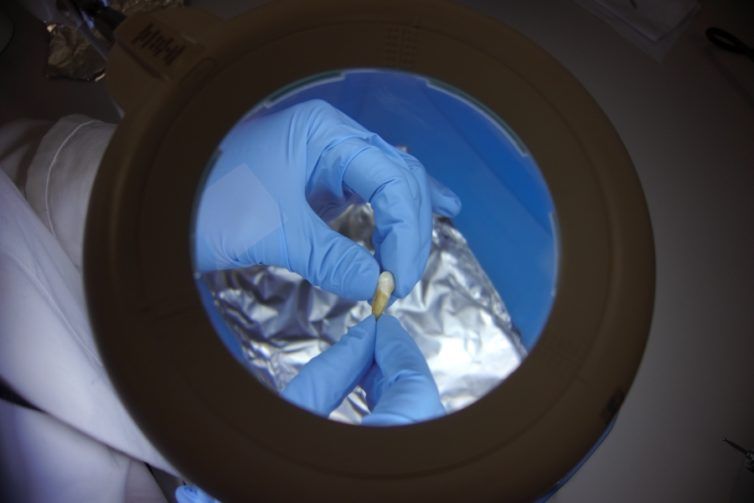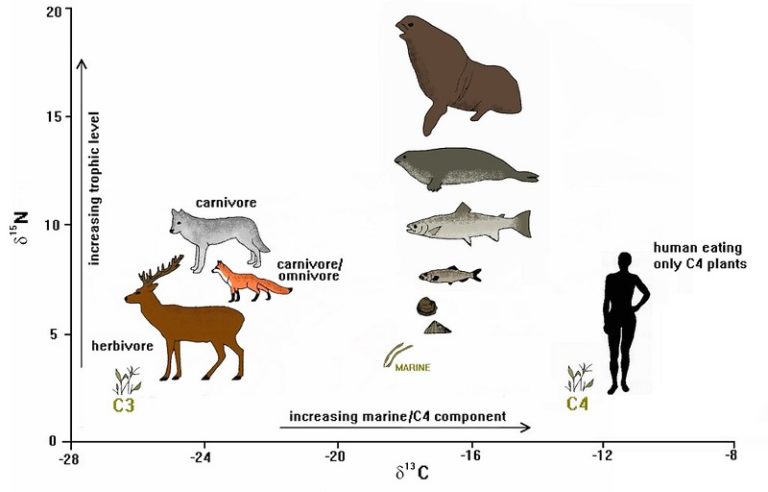Home / History / Archaeology / Forensic Archaeology and Anthropology / Reconstructing diet from isotopes

Reach your personal and professional goals
Unlock access to hundreds of expert online courses and degrees from top universities and educators to gain accredited qualifications and professional CV-building certificates.
Join over 18 million learners to launch, switch or build upon your career, all at your own pace, across a wide range of topic areas.


 Food web showing the approximate values for C3 vs C4 and marine vs terrestrial food sources. (Source: chrono.qub.ac.uk)
Food web showing the approximate values for C3 vs C4 and marine vs terrestrial food sources. (Source: chrono.qub.ac.uk)






